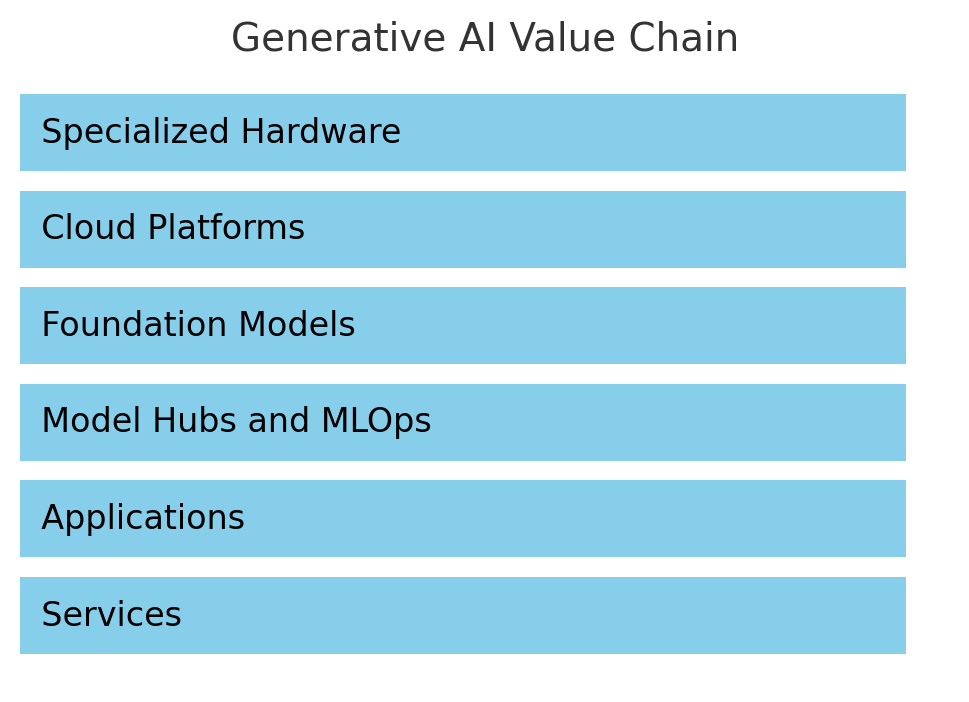The generative AI landscape is burgeoning, with foundation models at its core, functioning as the intelligent nucleus of the technology. Surrounding these pivotal models is a rapidly developing value chain that is essential for both the training and practical deployment of generative AI.

Here’s a diagram illustrating the generative AI value chain, with each layer represented from the foundational Specialized Hardware at the bottom to the user-facing Services at the top.
At the base of this ecosystem is specialized hardware. These powerful computational machines are the bedrock upon which AI models are trained, requiring massive amounts of data processing to simulate neural networks effectively. Ascending from this foundational tier are cloud platforms, which democratize access to this computational might, offering scalable resources and services crucial for AI development and deployment.
MLOps and model hubs constitute the next layer, providing the essential toolkit and collaborative frameworks needed for organizations to customize foundation models for their specific needs. These hubs and operations streamline the adaptation and integration of generative AI into various applications, enhancing organizational agility and innovation.
On top of this infrastructure are the applications themselves, designed to leverage the generative abilities of AI. They range from sophisticated content generators to intuitive chatbots and dynamic recommendation engines, each tailored to fulfill particular tasks such as customer service and engagement.
Crowning the generative AI value chain are the services. These are the polished, end-user interfaces where the sophisticated backend processes manifest as seamless, user-centric experiences. These services often amalgamate multiple applications, delivering the transformative powers of generative AI directly into the hands of users.
Initially, the high costs associated with developing foundation models meant that only the tech behemoths, well-funded startups, and open-source research collectives could invest in them. Yet, the industry is witnessing a shift towards smaller, more efficient models capable of delivering potent results without the previously required resource-heavy investments. This evolution is paving the way for a diverse range of market players, evidenced by the successes of startups like Cohere, Anthropic, and AI21 Labs, which have made strides in developing their own large language models.
As the generative AI ecosystem continues to mature, we see a democratization of AI technologies, making them more accessible and tailorable for a broader spectrum of businesses. This not only spurs innovation but also enables a competitive market where the power of AI can be harnessed by a wider community, driving forward the next wave of technological transformation.
